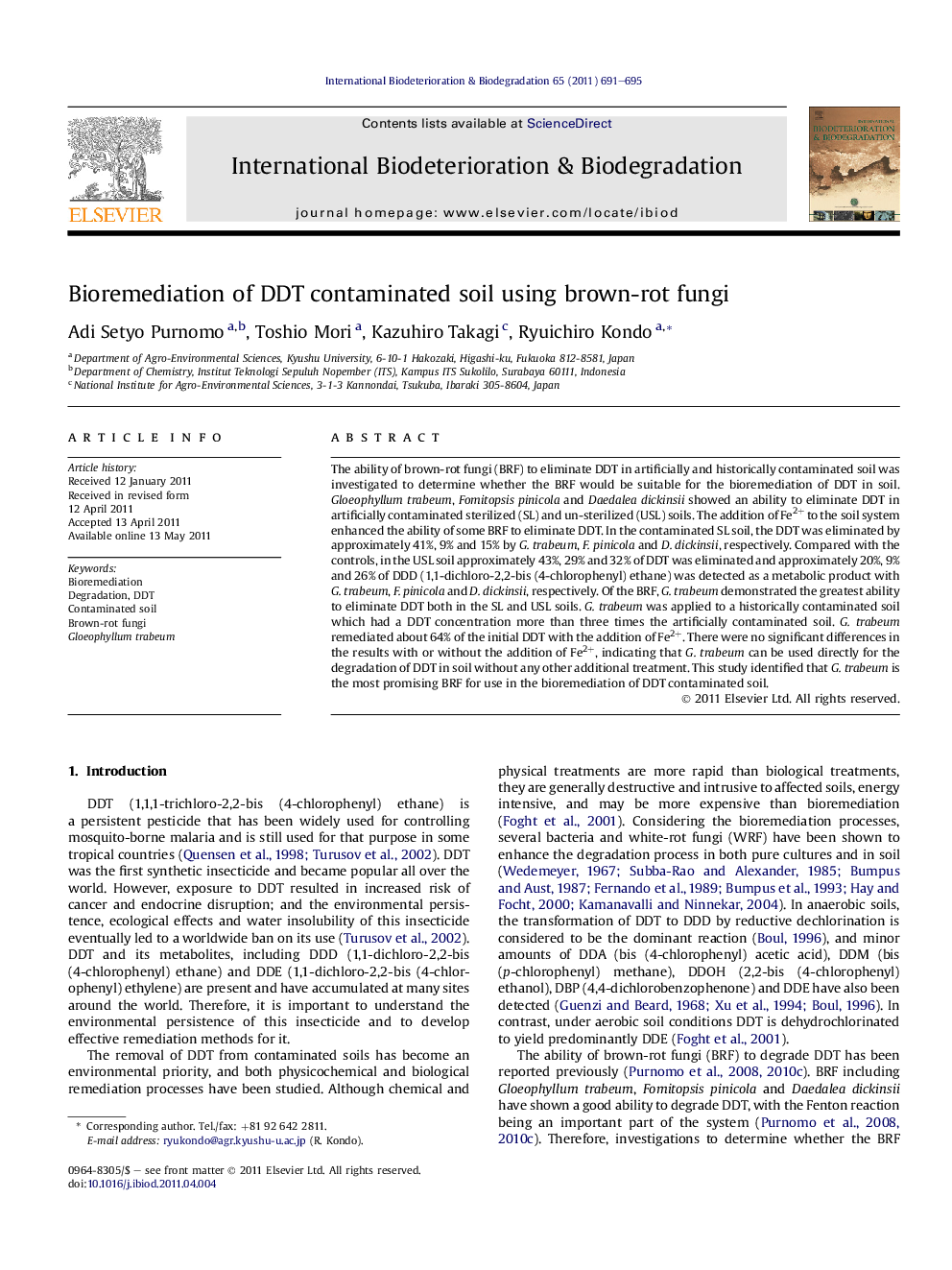| کد مقاله | کد نشریه | سال انتشار | مقاله انگلیسی | نسخه تمام متن |
|---|---|---|---|---|
| 4365302 | 1301751 | 2011 | 5 صفحه PDF | دانلود رایگان |

The ability of brown-rot fungi (BRF) to eliminate DDT in artificially and historically contaminated soil was investigated to determine whether the BRF would be suitable for the bioremediation of DDT in soil. Gloeophyllum trabeum, Fomitopsis pinicola and Daedalea dickinsii showed an ability to eliminate DDT in artificially contaminated sterilized (SL) and un-sterilized (USL) soils. The addition of Fe2+ to the soil system enhanced the ability of some BRF to eliminate DDT. In the contaminated SL soil, the DDT was eliminated by approximately 41%, 9% and 15% by G. trabeum, F. pinicola and D. dickinsii, respectively. Compared with the controls, in the USL soil approximately 43%, 29% and 32% of DDT was eliminated and approximately 20%, 9% and 26% of DDD (1,1-dichloro-2,2-bis (4-chlorophenyl) ethane) was detected as a metabolic product with G. trabeum, F. pinicola and D. dickinsii, respectively. Of the BRF, G. trabeum demonstrated the greatest ability to eliminate DDT both in the SL and USL soils. G. trabeum was applied to a historically contaminated soil which had a DDT concentration more than three times the artificially contaminated soil. G. trabeum remediated about 64% of the initial DDT with the addition of Fe2+. There were no significant differences in the results with or without the addition of Fe2+, indicating that G. trabeum can be used directly for the degradation of DDT in soil without any other additional treatment. This study identified that G. trabeum is the most promising BRF for use in the bioremediation of DDT contaminated soil.
► Brown-rot fungi have a good ability to eliminate DDT in contaminated soil.
► The addition of Fe2+ enhanced the ability of BRF to eliminate DDT.
► Gloeophyllum trabeum demonstrated the greatest ability to eliminate DDT.
► G. trabeum remediated 64% of the initial DDT in historically contaminated soil.
► G. trabeum is suitable for use in bioremediation of DDT contaminated soil.
Journal: International Biodeterioration & Biodegradation - Volume 65, Issue 5, August 2011, Pages 691–695